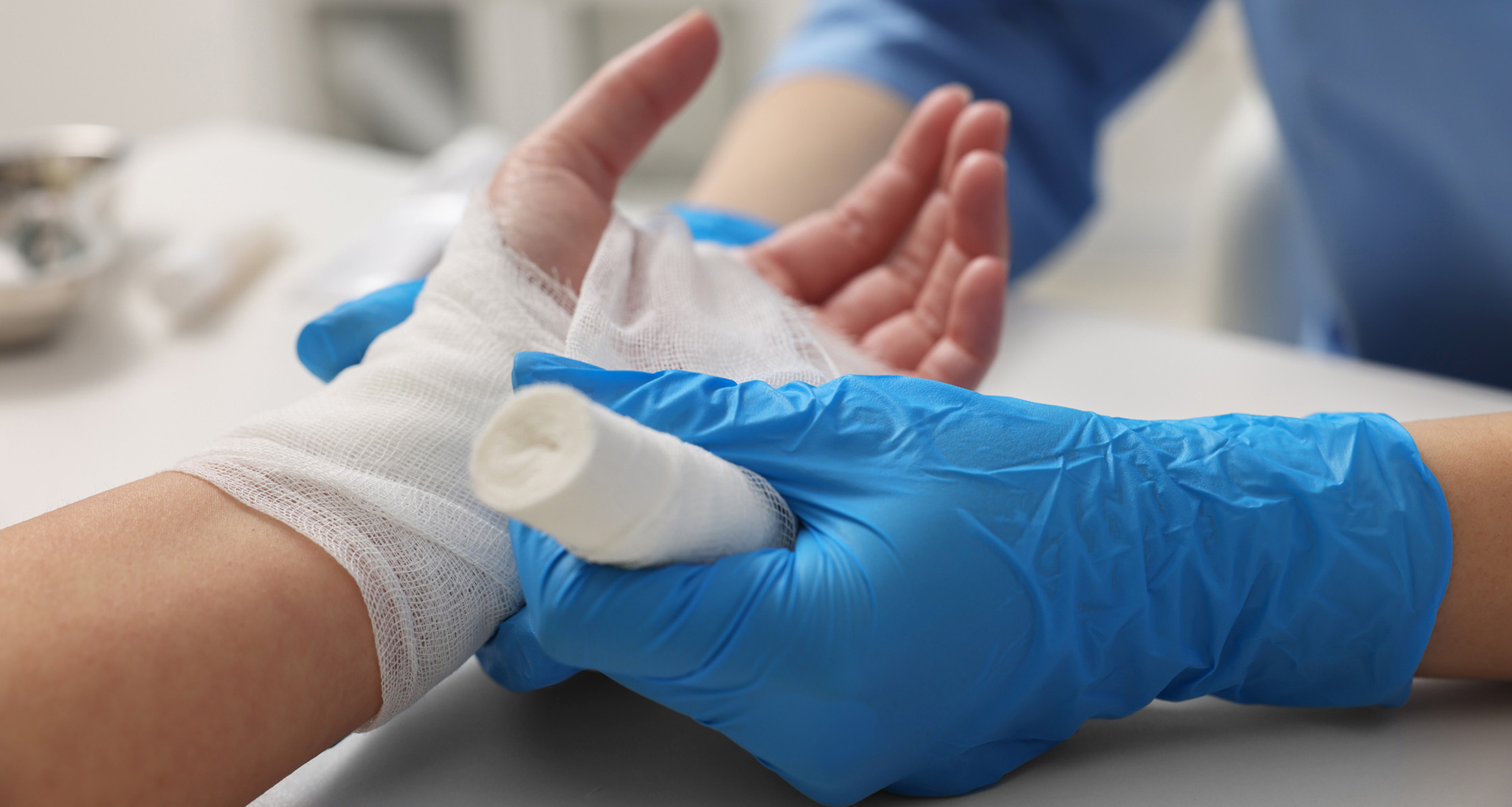Every 60 seconds someone in the U.S. sustains a burn injury serious enough to require treatment.
Most of us have spilled hot coffee or touched a hot pan handle enough times to know that burns are both painful and common. In fact, every 60 seconds someone in the U.S. sustains a burn injury serious enough to require treatment.
Burns are skin or tissue damage caused by hot objects or liquids, fire, friction, the sun, electricity, or certain chemicals.
The good news is that many burns can be avoided by practicing a few simple strategies both in and outside of your home. Learn more about preventing burns and what to do if you’ve been burned.
How Can I Prevent Burns?
All of us are at risk for burns, but some people may be at higher risk including children, older adults, and people with disabilities. It’s important for all of us to put some basic safety measures in place to keep ourselves and others safe. Since close to 44% of all home fires are caused by cooking, many of these tips have to do with protecting yourself in the kitchen.
- Turn pot and pan handles away from the stove’s edge. When a handle is sticking out, it’s easy to bump it or accidentally knock the pot or pan over. Make sure the handles are facing toward the back of the stove.
- Place hot objects in safe places. If you have a hot liquid or food on the counter, make sure it’s not on the edge where it can be easily knocked over. Most burns are caused by contact with a hot object or liquid rather than by fire or flame.
- Wear close-fitting clothes or roll your sleeves up when cooking or grilling. You don’t want your shirt sleeve or a loose piece of clothing to catch fire while you’re cooking or grilling. Wear sensible clothes, and if you’re grilling, use a long-handled tool so that you can stand back and avoid any flare-ups.
- Establish a kid-free zone. If you have children in the house, have a kid-free zone of at least three feet around the stove, grill, fire pit, or campfire to ensure their safety. Never hold a child while you’re cooking, drinking something hot, or carrying something hot.
- Don’t leave your cooking unattended. Stay in the kitchen or near the grill while you’re cooking. Even if you’re in the kitchen, use a timer to remind yourself to check on the different foods you’re making. It’s easy to get distracted doing other tasks.

- Use potholders or oven mitts. Handle your pots and pans with good potholders or oven mitts to avoid being burned. If you put something in the microwave, give it a moment to cool off or grab a potholder to remove it.
- Unplug devices. Whether it’s a waffle iron, a crock pot, or a curling iron or hair styling device, make sure to unplug it after you use it. Check the kitchen after you cook to make sure all burners and other appliances are turned off.
- Attend public fireworks displays. Check your local area for public fireworks displays and leave lighting them to the professionals. Many people end up getting seriously burned when a firework misfires or goes off incorrectly.
What Steps Should I Take if I Get Burned?
The answer to this question depends on what type of burn you receive. There are three types of burns, depending on how large an area it covers and how deep the damage goes.
- First-degree burns only affect the thin top layer of skin.
- Second-degree burns include the thick lower layer of skin.
- Third-degree burns penetrate the entire thickness of the skin, permanently destroying the tissue underneath.
You can care for most minor first or second-degree burns at home. If the burn is red and painful with mild swelling or a little blistering, then it’s probably a first-degree or minor second-degree burn.
Deep second-degree and third-degree burns require immediate medical attention. If the burn is dark red and looks glossy with a lot of blistering it is likely a deep second-degree burn. If the burned skin is dry and leathery, perhaps with white, brown, or black patches, these are signs of a third-degree burn.
Here are some steps you can take at home to treat minor burns:
- Remove clothing, jewelry, and metal from the burned area. These items may hide underlying burns or retain heat.
- Place the burn under cool running water for 10-15 minutes until it’s less painful. If you don’t have access to running water, place a cool, clean, wet cloth on the burn. Don’t use ice or cold water. Extreme cold can cause additional injury.
- Clean the burn gently with soap and water. Do not pick at blisters or do any harsh scrubbing.
- Don’t apply creams, sprays, or other home remedies until you know how serious the burn is. You may put a thin layer of ointment, such as aloe vera or petroleum jelly on the burn once you establish it’s a minor burn.
- Cover the burn with a clean, dry cloth or gently tape a piece of nonstick gauze over the burn.
- Call 911 or seek medical attention immediately if you think you have a second or third-degree burn with symptoms such as a lot of blistering, black, brown or white patches on the skin, or signs of infection like discharge, increased pain, or fever.
With the right safety measures in place, you can help keep you and your family safe from burns.







